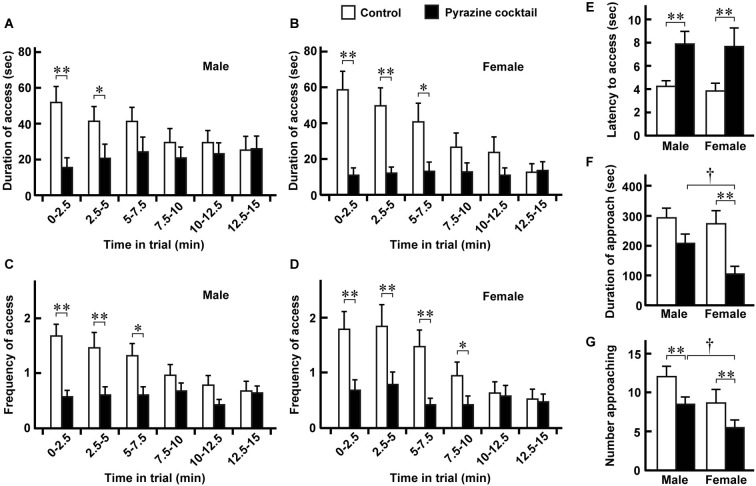Figure 3.
Avoidance behaviors of male and female deer. (A,B) Duration of access was defined as the length of time that males (n = 28) and females (n = 19) spent putting their heads to the sheet in either feeding area. Means were obtained from the individual animals during every 2.5-min period of the 15-min trial. (C,D) Frequency of access was defined as the number of times that males and females craned their necks to the sheet in either area. Data were obtained from the same deer pack as in (A) and (B). (E) Latency to the access from the approach. Data were obtained from the same deer pack except for one male that had no access. (F,G) Duration (F) and number (G) of approaches to the feeding area. The means were estimated from the same pack as in (A) and (B). “Access” and “approach” were defined as ±2 and ±1 of the position indexes shown in Figure 2. Open and closed bars indicate the control and pyrazine cocktail areas, respectively, in all panels. The time-dependent differences in the values for the pyrazine cocktail in (A–D) are not significant (p > 0.05, Friedman test). * p < 0.05, ** p < 0.01, Wilcoxon signed-rank test. † p < 0.05, Mann-Whitney U-test.

